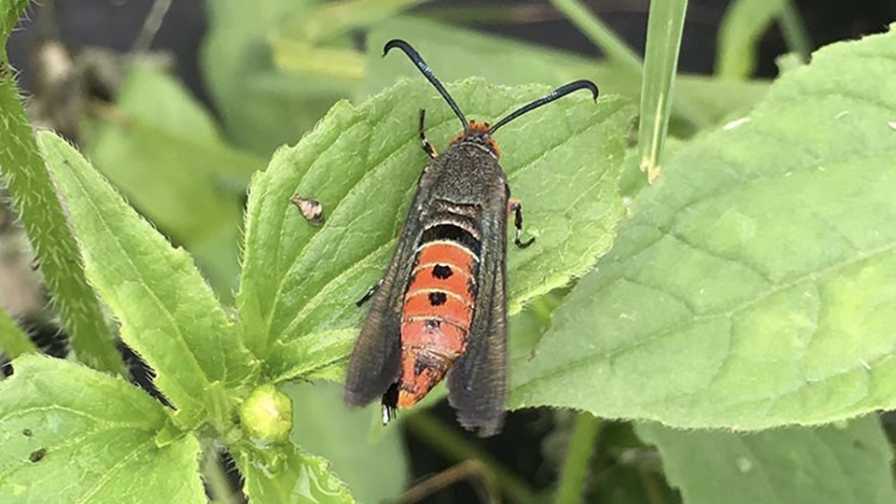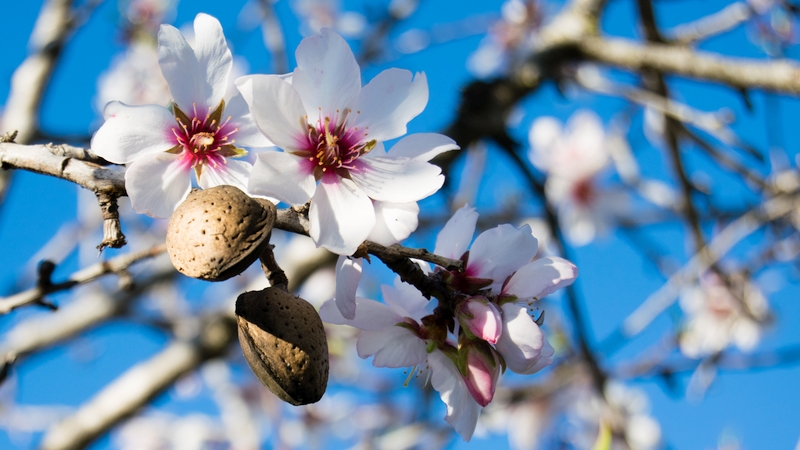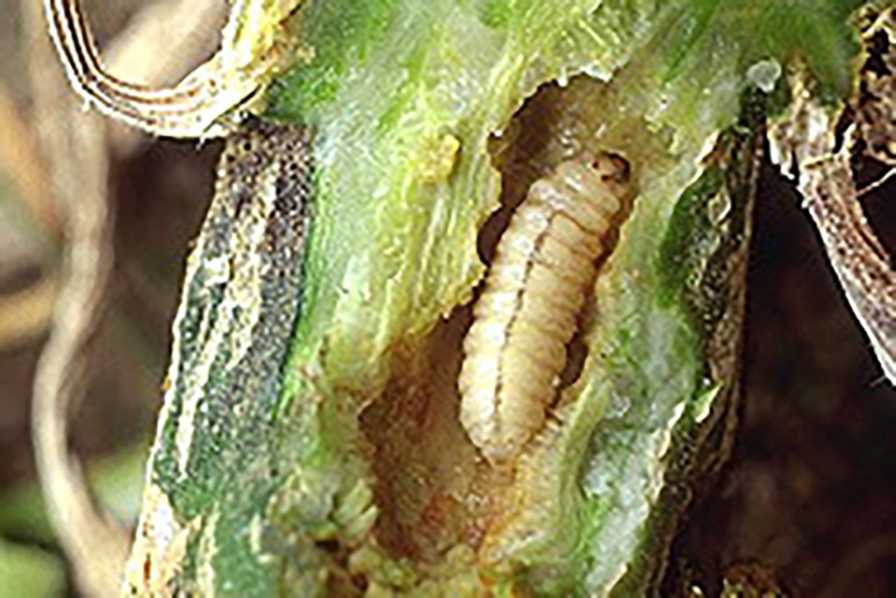Field Scouting Guide: Squash Vine Borer
This field scouting guide feature concentrates on squash vine borer.
Thomas P. Kuhar, Professor and Extension Vegetable Entomology Specialist from Virginia Tech University, and his Ph.D. student, Sean Boyle, share how to spot and treat this pest.
THE BASICS
- Scientific name: Melittia cucurbitae (Lepidoptera: Sesiidae)
- Common name: Squash Vine Borer (SVB), clearwing moth
- Geographical Range: North America east of the Rocky Mountains, from Southern Canada through Central America and as far south as Brazil and Argentina.
- Crops affected: Crop species in the genus Cucurbita are most susceptible to squash vine borer damage, particularly C. pepo (summer squash, zucchini, acorn squash, spaghetti squash, and pumpkin varieties) and C. maxima (Hubbard, marrow, buttercup, candy roaster, and banana squash varieties).
PEST IMPACT
Squash vine borer (SVB) is a sporadic pest throughout the Eastern U.S. and is often more damaging to small acreage farms and home gardens. Yet it can still cause significant losses in large cucurbit systems with substantial infestations or in long-growing areas like Florida.
Since most U.S. squash production areas overlap SVB, economic losses can be high. Summer and winter squash market-values are roughly $121 million and $190 million annually.
It is difficult to obtain 100% control of this pest. But growers can achieve significant reductions in damage by using the controls listed in the table.
Please keep in mind that SVB may not be listed on the label for some of these insecticides. The aforementioned information comes from insecticide efficacy testing in Virginia and other locations.
DAMAGE
SVB is a pest in its larval stage. In May or June, adults begin laying eggs on the stems and leaves, often at the base of the plant. The larvae hatch in six to 11 days, and soon after bore into the stem where they will feed on surrounding tissues for 24 to 27 days.
If this feeding occurs within the main stem, it will girdle the plant and eventually kill it. On the other hand, if feeding occurs within runner stems, damage will be localized and will not kill the plant.
When a larva completes development, it falls to the soil and pupates. In northern states, SVB will not go through a second generation. However, a second generation occurs in most of the southern areas of its geographical range.
IDENTIFICATION
SVB adults are unique looking: large moths that fly during the daytime and do not share much resemblance to any other insect within a cucurbit-growing system.
Their damage as larvae is distinct as well. As they feed internally within a stem, they exude frass out of the entrance hole. This sawdust-like frass is the tell-tale sign of SVB damage.
Along with insect excrement, plants will begin to show localized wilt near the feeding areas. A sudden appearance of whole plants that have wilted, surrounded by healthy plants, is an easily observed sign of potential SVB damage. This wilting is really the only damage that could be mistaken for another issue such as plant disease, excessive heat or drought, and insufficient irrigation.
RECOMMENDED TREATMENT
Controlling SVB can be challenging. Monitor for the moths by either inspecting plants or by using pheromone traps. The traps attract male moths and can give growers early warning of impending egg laying on plants. These colorful moths fly during the day.
Once you find the first moth, apply insecticides to the base of plants. Do this weekly, up to four times, for best control.
OTHER MANAGEMENT STRATEGIES
Crop rotation: Larvae overwinter in the soil, so planting squash after squash increases the likelihood of future problems. Crop rotation is most effective if fields are far apart, as squash vine borer adults are strong fliers and have been known to locate fields up to a mile from where cucurbits were grown the previous year. If growers are limited to small areas for cultivation, growing squash every other year will achieve similar results.
Timing of planting: In the mid-Atlantic and north, early plantings tend to experience greater SVB damage. Thus, later plantings can avoid or mini-mize the late-spring SVB egg-laying period, as the plants do not mature until after SVB have laid the majority of their eggs for the season. Conversely, in the South,earlier plantings have exhibited less damage, as it is possible to grow a complete crop before SVB begin its activity.
Row covers: Row cover can be an effective physical barrier that prevents SVB from laying eggs on plants. However, once the squash begins flowering, the covers must be removed to facilitate pollination. This is quite a laborious undertaking and is only feasible and worthwhile for smaller, in-row plantings. So it would not be useful for large acreage plantings (e.g., pumpkins).













